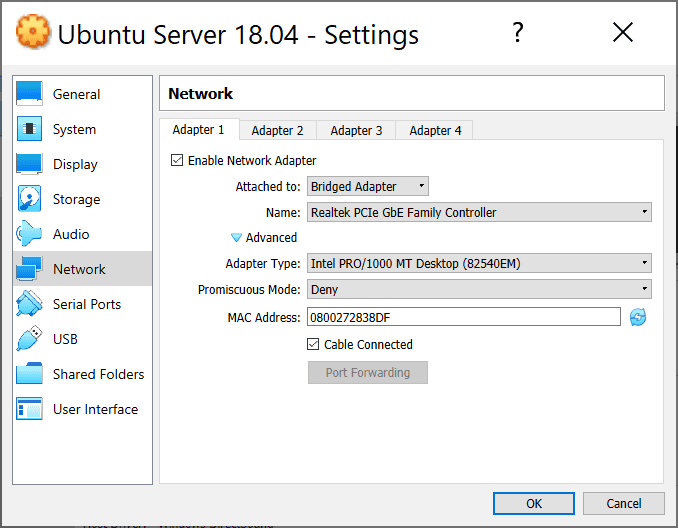
A terminal session or emulator software (e.g. A copy of the Ubuntu Server 16.04.1 LTS ISO image for your host machine architecture downloaded and easily loacated.  A copy of the latest VirtualBox and VirtualBox Extension Pack software installed on your host machine. If you decide to change any of them then I will assume you know what you are doing. This guide reflects these characteristics. The administrator will have superuser privileges. It will have a single unprivileged user called administrator, referred to as the administrator. It will have a 128 GB sparse hard disk (the file on your host will grow as the disk fills up). It's fully-qualified network hostname will be ubuntu01.local, while it's machine name will be ubuntu01. It will use a bridged network adapter meaning it get allocated an IP address by the DHCP service. We will build a virtual machine (VM) with the following characteristics: Some of these tasks seem trivial to me now, but I still remember how difficult it was to piece this kind of information together without prior experience. I also cover how to install the VirtualBox Guest Additions software on the freshly minted VM, as well as how to configure both host and guest accounts for public key authentication.Īlthough I wrote this document for myself, I make as few assumptions as is practical about the skill-level of the reader. This guide describes how I build a basic server running Canonical's Ubuntu Server 16.04 LTS Linux operating system inside a VirtualBox virtual machine (VM).
A copy of the latest VirtualBox and VirtualBox Extension Pack software installed on your host machine. If you decide to change any of them then I will assume you know what you are doing. This guide reflects these characteristics. The administrator will have superuser privileges. It will have a single unprivileged user called administrator, referred to as the administrator. It will have a 128 GB sparse hard disk (the file on your host will grow as the disk fills up). It's fully-qualified network hostname will be ubuntu01.local, while it's machine name will be ubuntu01. It will use a bridged network adapter meaning it get allocated an IP address by the DHCP service. We will build a virtual machine (VM) with the following characteristics: Some of these tasks seem trivial to me now, but I still remember how difficult it was to piece this kind of information together without prior experience. I also cover how to install the VirtualBox Guest Additions software on the freshly minted VM, as well as how to configure both host and guest accounts for public key authentication.Īlthough I wrote this document for myself, I make as few assumptions as is practical about the skill-level of the reader. This guide describes how I build a basic server running Canonical's Ubuntu Server 16.04 LTS Linux operating system inside a VirtualBox virtual machine (VM). 
Starting the Virtual Machine in Headless Mode.Installing the VirtualBox Guest Additions software.Preparing the VM for the VirtualBox Guest Additions software.
 Specifying the virtual hardware requirements. Ubuntu Server 16.04 LTS VirtualBox VM Basic Server
Specifying the virtual hardware requirements. Ubuntu Server 16.04 LTS VirtualBox VM Basic Server










